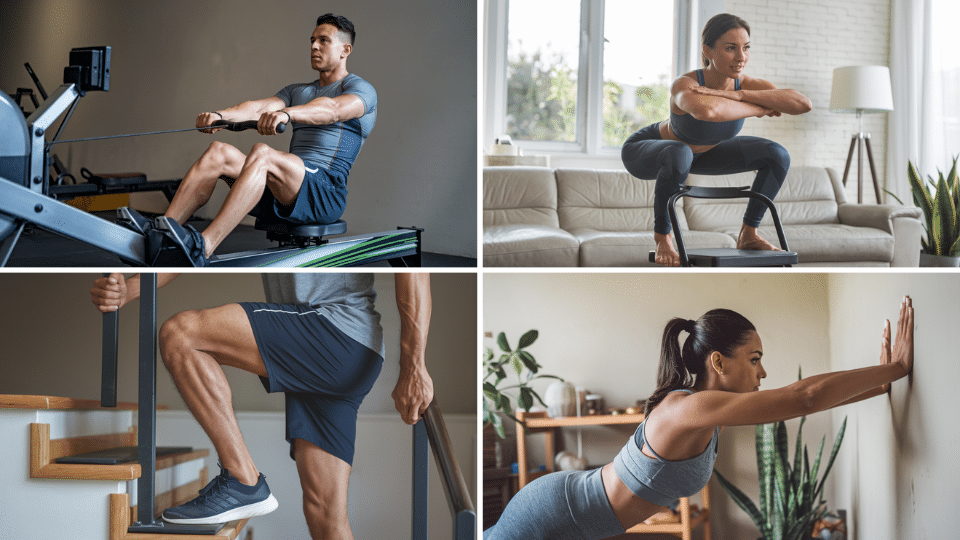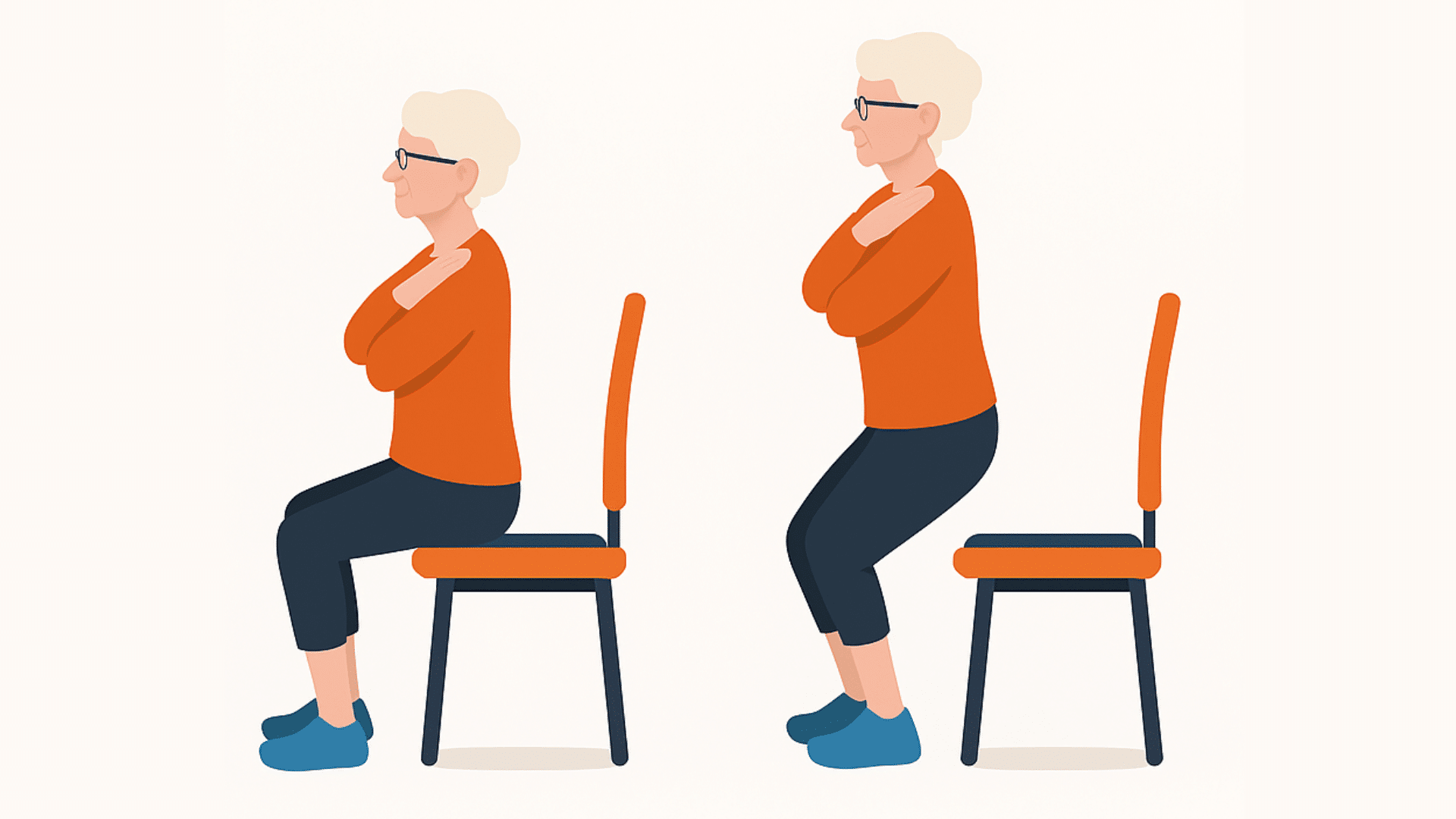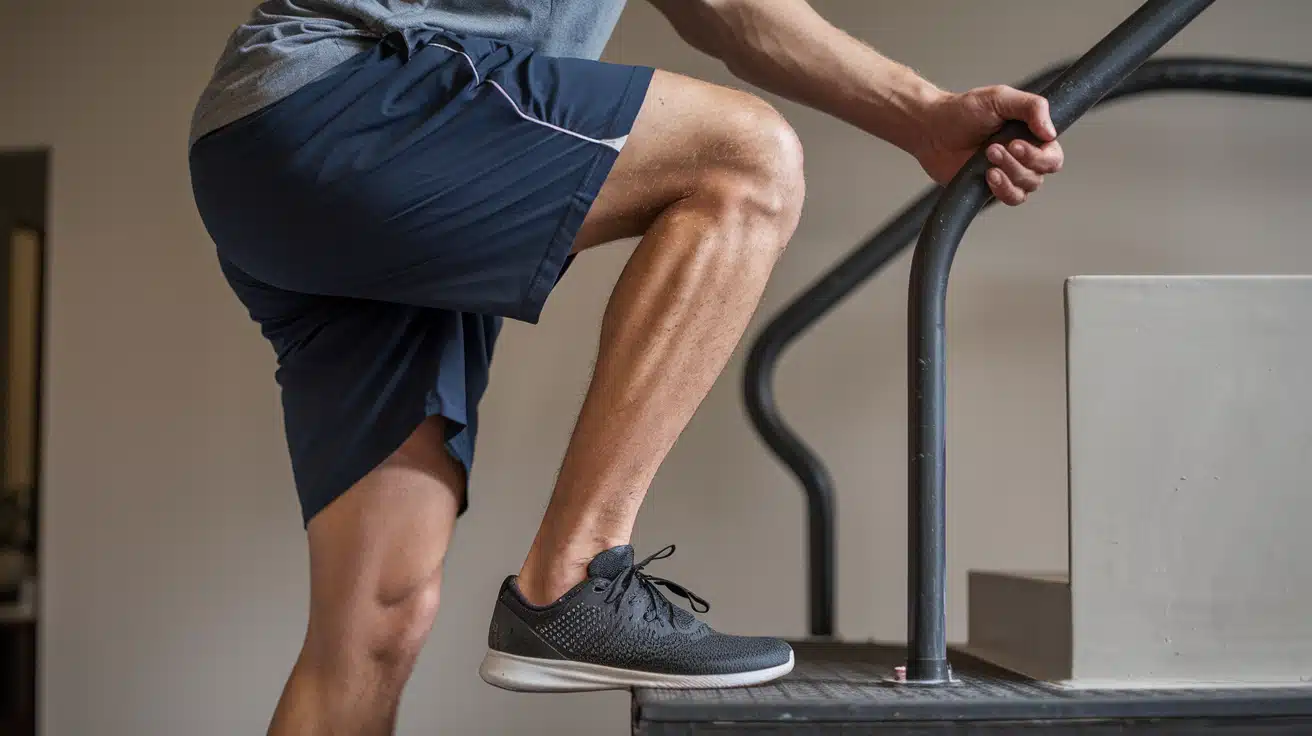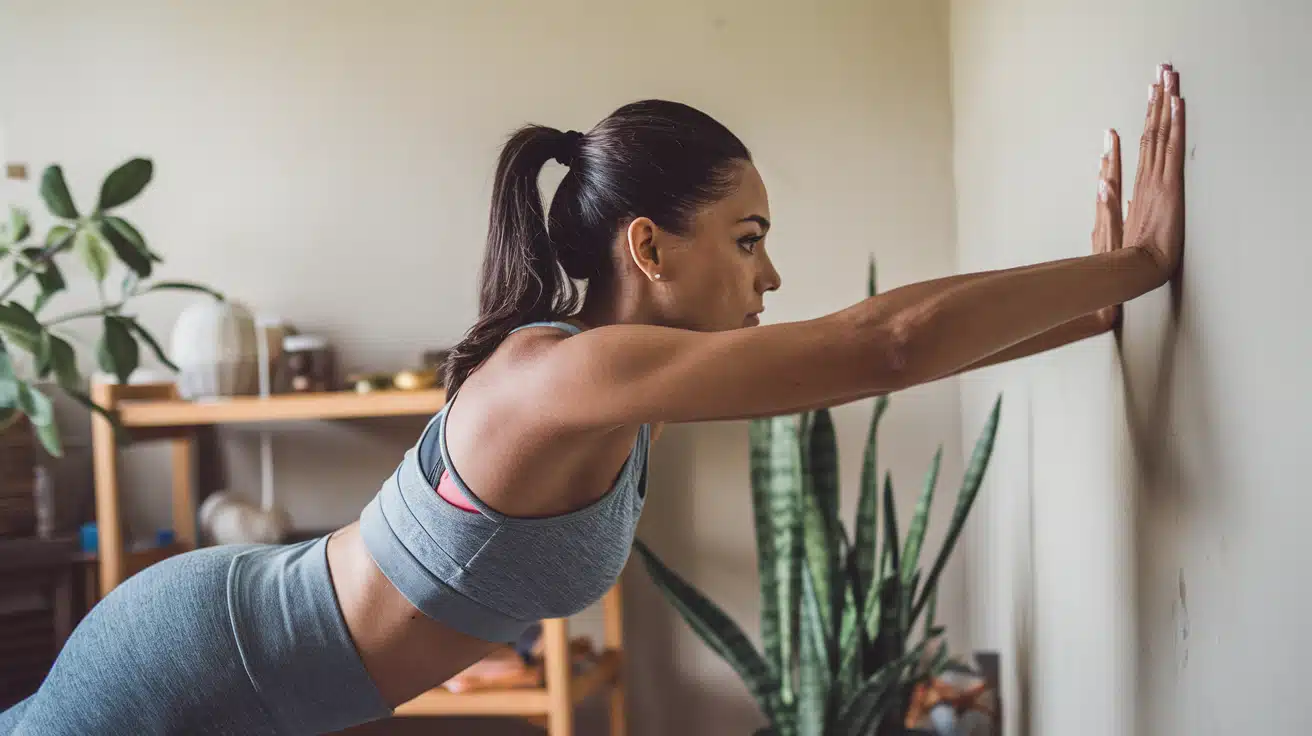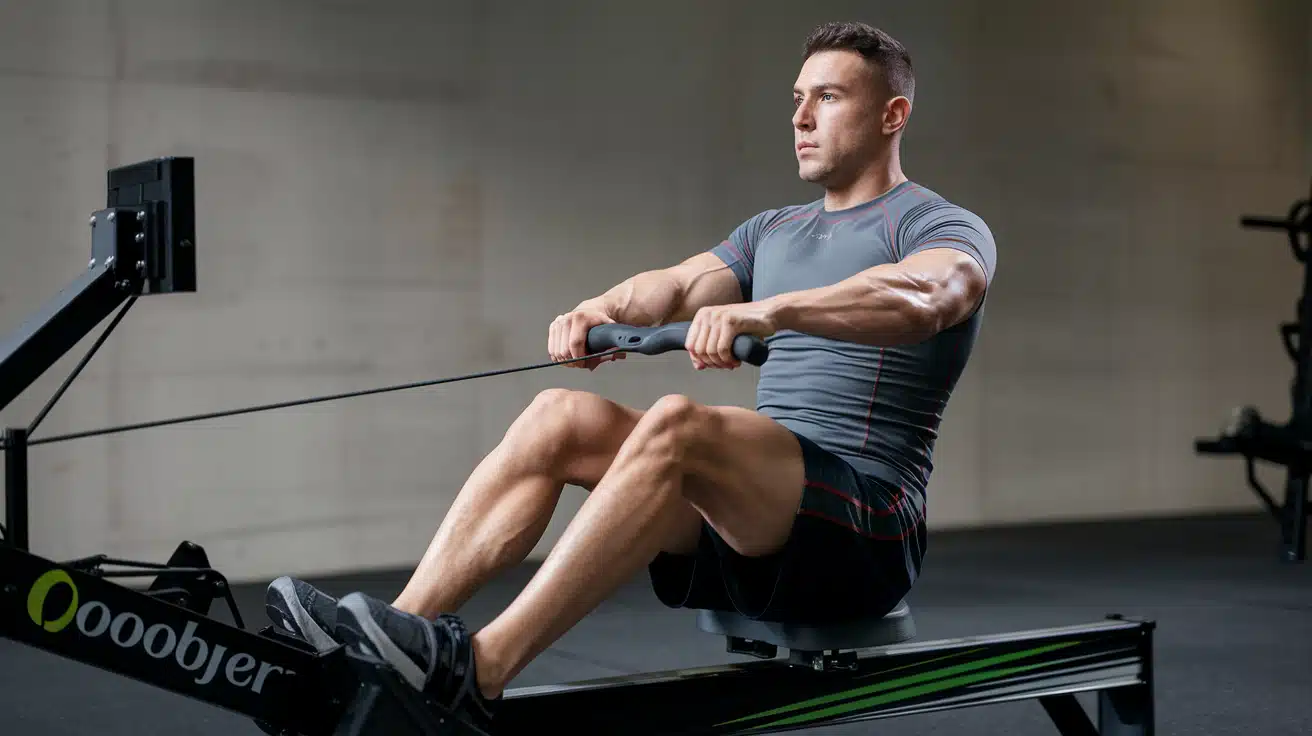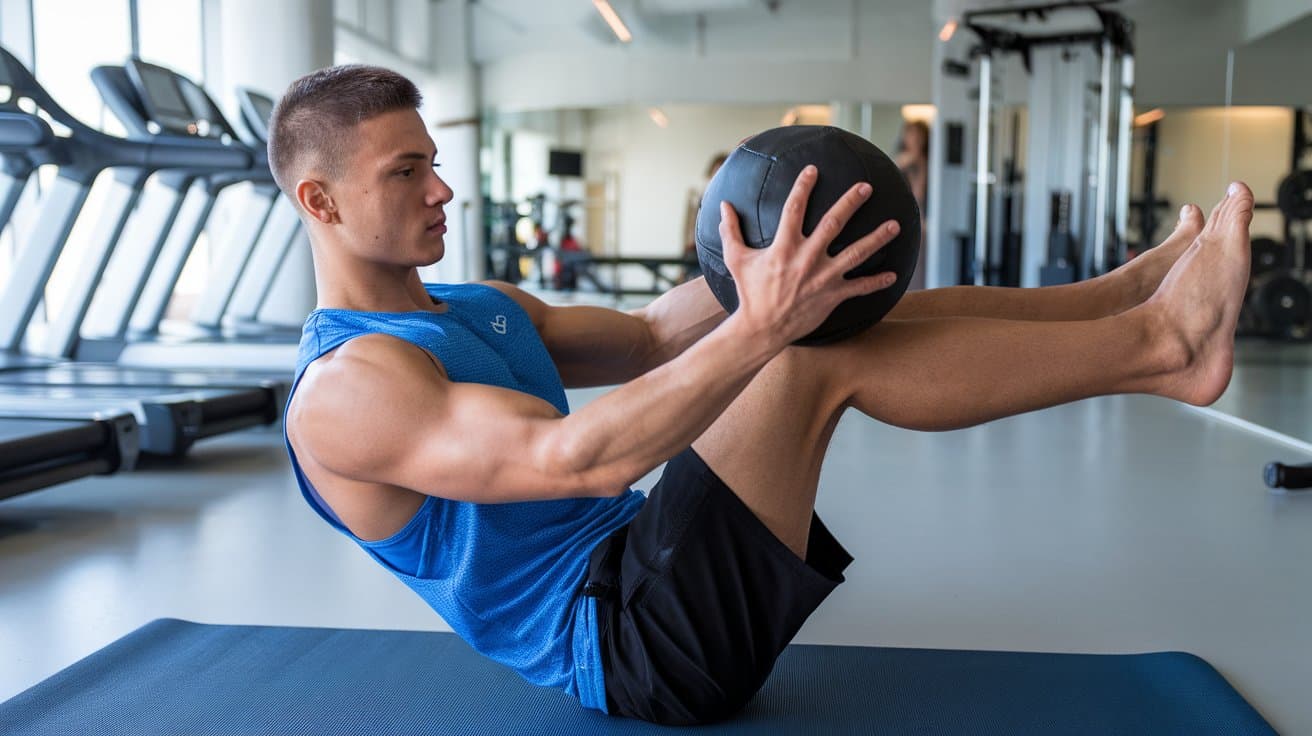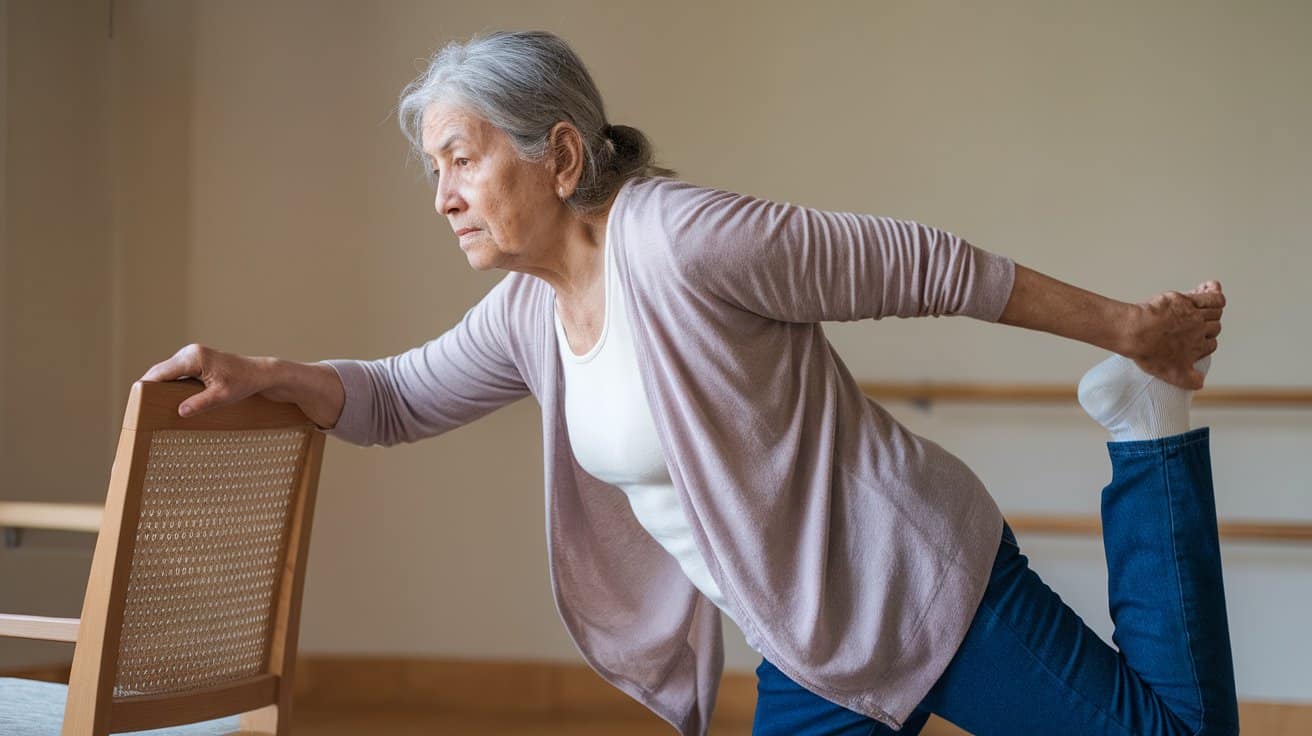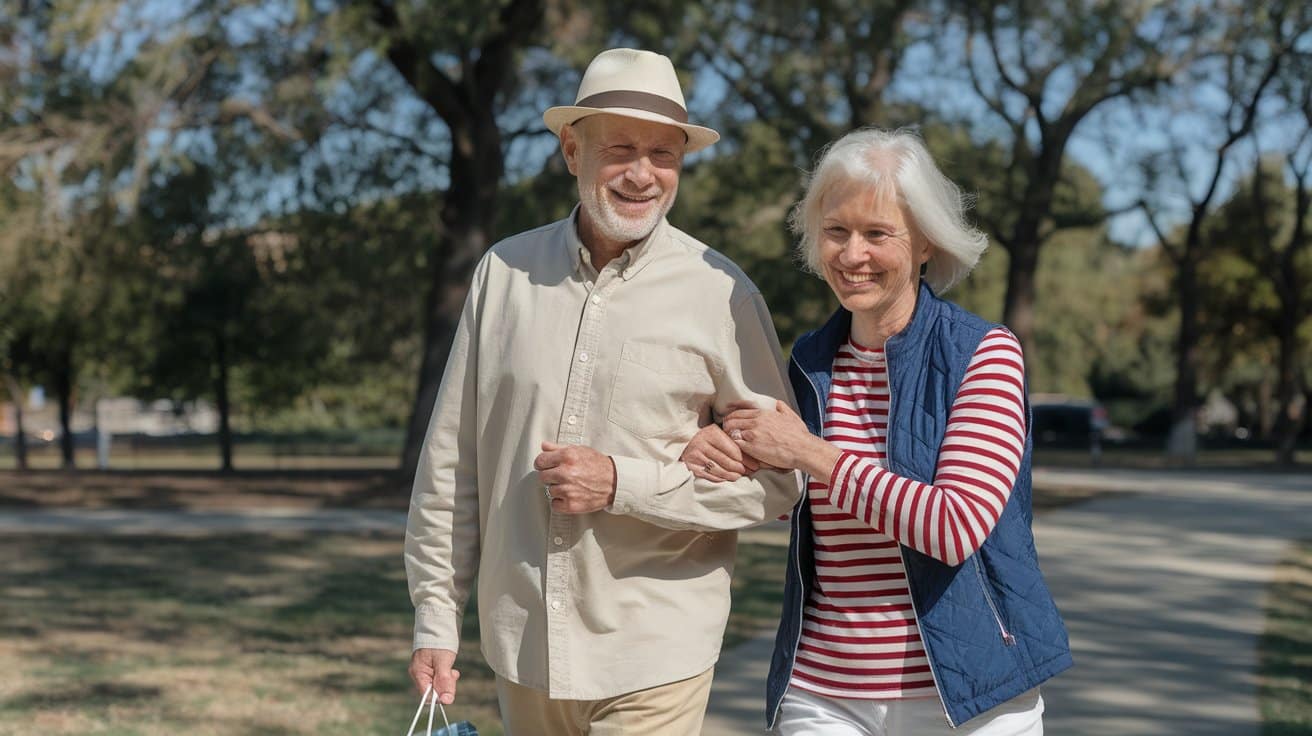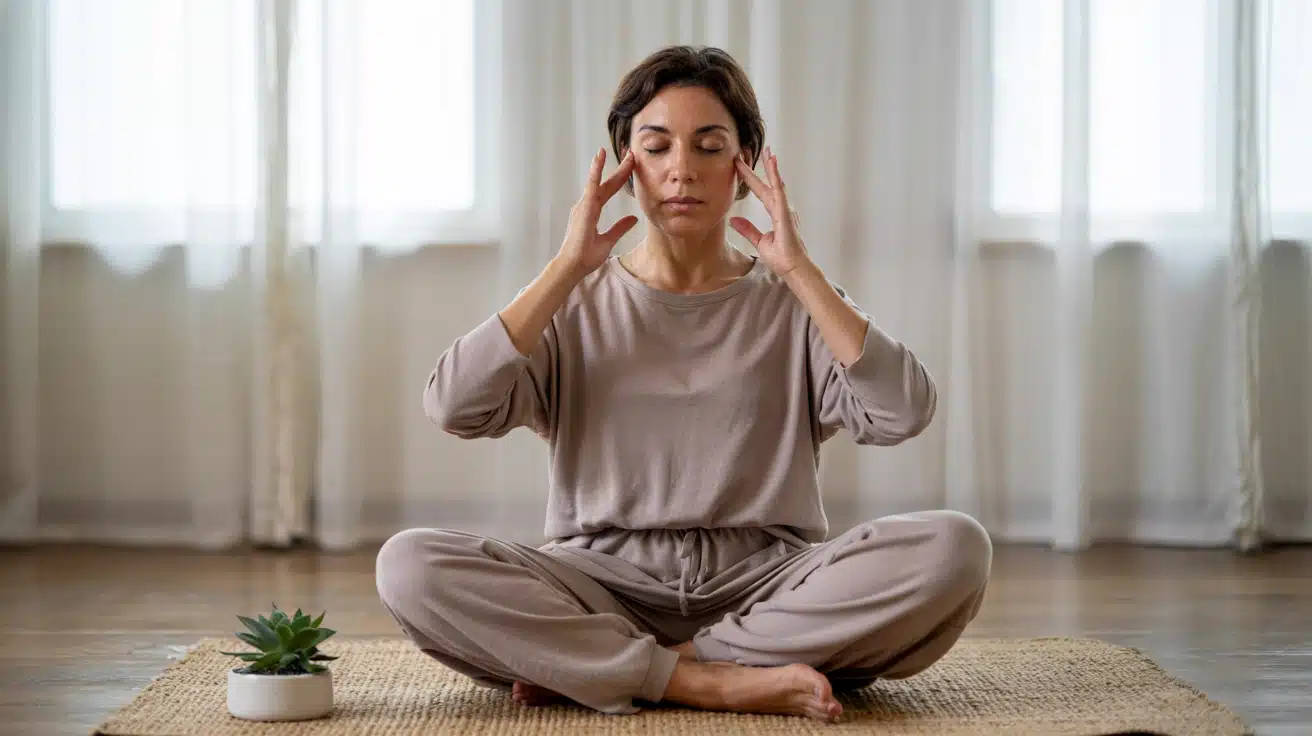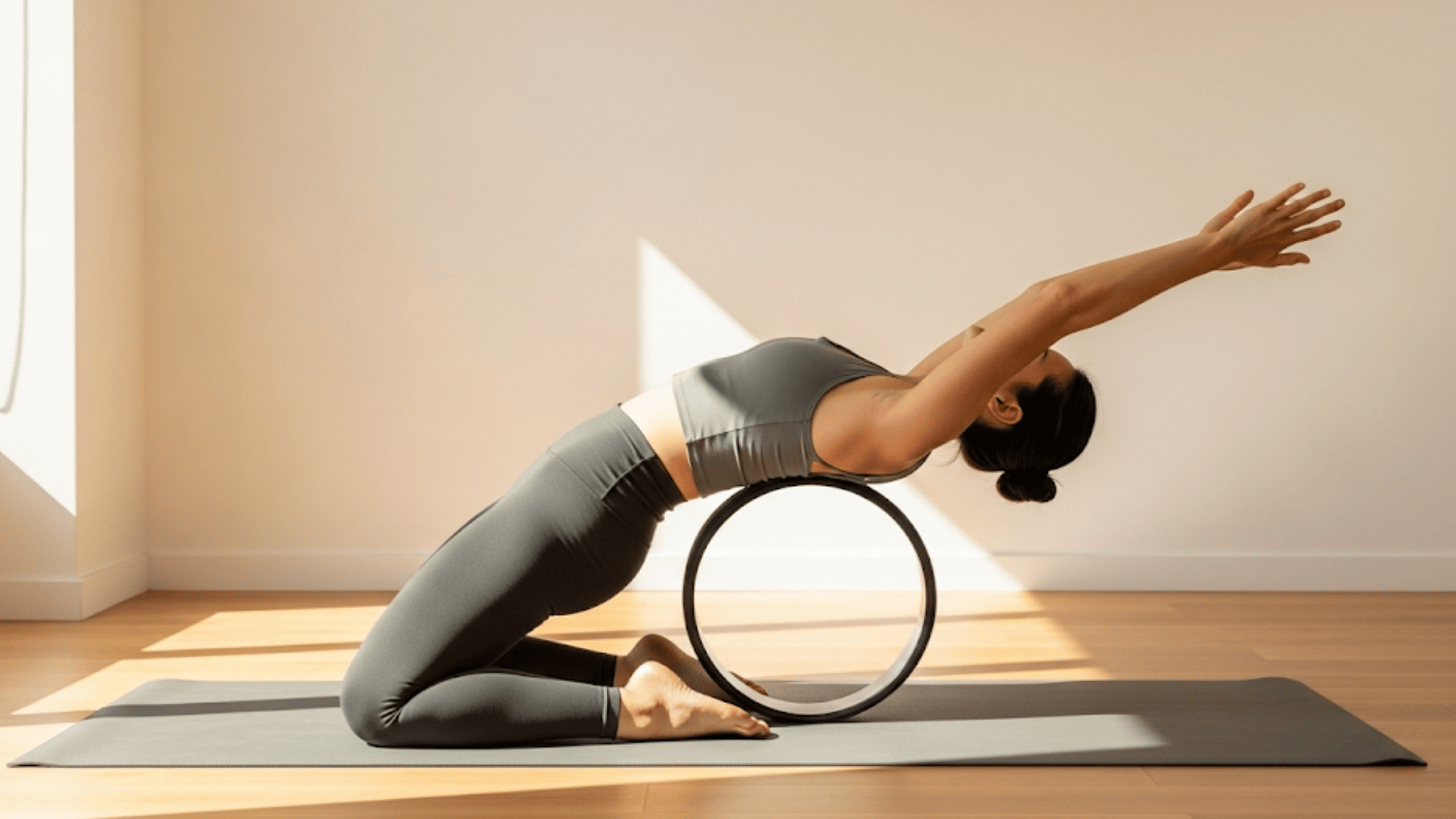While fitness experts talk about complex workout routines and gym equipment, what you need are simple movements that help you stay independent.
The truth is, the best exercises for seniors aren’t about building muscle for show; they’re about building strength for life.
What if I told you that just a few basic movements could help you get out of chairs more easily, climb stairs without getting winded, and carry groceries without strain?
These functional exercises focus on the movements you perform every day, making daily tasks feel effortless rather than exhausting.
In this guide, I’ll share the specific exercises that work best for seniors who want to stay strong, independent, and confident in their daily activities. Let me show you how simple it can be.
What is Functional Fitness for Seniors?
Functional fitness refers toexercising with movements that mimic everyday life. This approach trains multiple muscle groups simultaneously to perform common actions, such as bending, reaching, lifting, and walking.
Squatting down practices the same motion used to sit in a chair. Standing on toes copies the movement made when reaching a high shelf. These practical exercises prepare the body to handle real-world tasks safely and easily.
For seniors, functional fitness holds special importance. It’s not about lifting heavy weights or running marathons. Instead, it focuses on maintaining the ability to do daily tasks independently.
The concept centers on real-world movements rather than isolated muscle exercises. Traditional gym workouts focus on one muscle at a time. Functional training teaches muscles to work together as they do in daily life.
Why Seniors Should Add Exercise to Their Routine?
Functional exercises offer a variety of benefits that are particularly valuable for older adults. Here are some of the key advantages of adding functional movements to routines:
- Improved strength for daily tasks: Functional training strengthens the muscle groups used every day, making chores like lifting boxes or rising from a chair much easier.
- Better balance and stability: These movements improve balance and coordination, which helps reduce the risk of slips and falls while walking or moving around.
- Injury prevention and joint support: Regular, gentle exercises help keep muscles and joints strong and flexible, thereby protecting joints and reducing the risk of common strains during activities.
- Increased flexibility and mobility: Functional workouts involve bending and stretching through comfortable ranges, making actions like reaching cupboards or tying shoes more comfortable.
- Maintained independence and confidence: Building functional strength enables seniors to continue taking care of themselves, remaining self-sufficient and confident in their ability to live independently.
7 Must-Do Functional Exercises for Older Adults
Functional fitness focuses on simple exercises that mirror real-life movements. These can be mixed and matched into workouts or practiced throughout the week.
1. Squats (Chair Sit-to-Stand)
Squats strengthen the thighs and hips, making it easier to stand up and sit down. Practicing squats with a sturdy chair for support helps with getting out of chairs.
This exercise also helps when picking up objects from low places. Start by sitting and standing from a chair without using hands for support.
2. Step-Ups
Step-ups help build leg strength and balance, which are essential for climbing stairs or stepping onto curbs. Step onto a low step or platform one foot at a time.
This trains the same muscles used for stairs and getting into vehicles. Use a handrail or wall for balance support when starting.
3. Wall Push-Ups
Wall push-ups boost arm, chest, and shoulder strength for pushing movements. Push-ups against a wall or countertop provide gentle training for daily tasks.
This helps with actions such as pushing open heavy doors or bracing oneself when getting out of bed. Stand arm’s length from the wall and press gently against it.
4. Rows (Pulling Exercises)
Rows strengthen back and arm muscles with a rowing motion. This pulling action is particularly helpful when opening drawers or doors.
This exercise makes lifting items, such as grocery bags or laundry baskets, easier. Rows can be performed with resistance bands or light weights while seated or standing.
5. Torso Twists
Torso twists enhance core strength and flexibility, aiding in movements that require twisting and reaching. Gentle seated or standing rotations work the core muscles safely.
This exercise makes actions like turning to look behind or fastening seatbelts easier. Twists can be done with or without a light resistance band for added challenge.
6. Single-Leg Balance
Single-leg balance involves practicing standing on one foot while holding onto a chair for safety. This builds better balance and ankle strength over time. Improved balance helps prevent falls during daily activities.
This exercise makes movements like putting on pants or stepping over objects safer and steadier.
7. Walking
Regular walking keeps leg muscles strong and improves endurance. Walking effectively maintains overall mobility and cardiovascular health.
Carrying light items while walking simulates carrying groceries. This helps improve grip strength and the ability to handle objects in real life.
Key Principles of Functional Training
- Movement-Based Focus: Each exercise mimics actions people perform regularly, such as lifting, reaching, or climbing stairs.
- Multi-Joint Movements: Functional exercises engage several joints simultaneously, just like real-world activities.
- Balance and Coordination: Training includes stability work to help prevent falls and improve confidence.
- Progressive Training: Exercises start simple and gradually increase in difficulty as strength improves.
Tips to Start Fitness Workouts After 50
Getting started with functional fitness is easier than most people think. These workouts don’t require expensive equipment or gym memberships.
1. Start Small and Focus on Form
Begin with basic movements and just a few repetitions. Proper technique matters more than the number of exercises completed.
- Quality should always be the priority over quantity
- Concentrate on doing each movement slowly and correctly
- Use support like railings or chairs when needed for balance
- There’s no shame in using assistance while building strength
2. Warm Up and Cool Down Properly
Proper preparation makes each workout more effective and safer. Take time to prepare muscles before exercising and help them recover afterward.
- Warm up with gentle activities like marching in place or arm circles
- Spend 3-5 minutes preparing muscles before the main exercises
- Cool down with gentle stretching, like calf stretches or shoulder rolls
3. Stay Consistent and Listen to Body Signals
Aim for functional fitness sessions about two to three times a week. Consistency matters more than intensity when building long-term habits.
- Take rest days when the body needs them
- Slow and steady progress yields better results than rushing
- Build routines gradually rather than jumping into intense schedules
- Pay attention to how the body responds to different exercises
Consult a Professional If Unsure-Consult healthcare providers before starting exercises, especially with existing conditions. Professional guidance ensures safety, adapts exercises, and reduces injury risk.
Conclusion
The reality is simple: functional exercises for seniors aren’t just another fitness trend; they’re your pathway to maintaining the independence you value most.
These movements I’ve shared aren’t complicated or time-consuming, but they’re powerful enough to keep you doing the things that matter to you.
Consider this: would you rather struggle with daily tasks or handle them with confidence?
The choice is yours, and it starts with taking that first step.
I encourage you to pick just one or two of these exercises and try them this week. Start small, listen to your body, and build from there. Your future self will thank you for the strength and independence you’re building today.
What’s stopping you from starting? Your independence is worth the effort of those few minutes.

